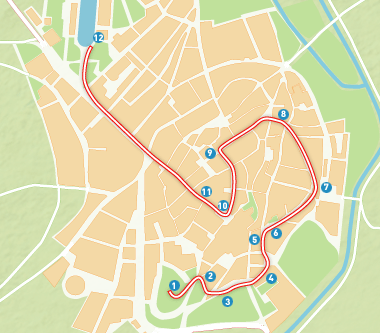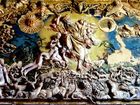
Medina de Rioseco has always been a communication point that linked the plateau with the northern zone. Besides being one of most prosperous commercial centers of the Reign of Castile, the city was the headquarter of the Admirals of Castile.
The river Sequillo, which gives its name to the village, marks the beginning of the route through this quiet Castilian village. Once crossed the river, the traveler will arrive to the Park Duque de Osuna, inaugurated in 1858. Trees, rosetrees and other species live in the beautiful gardens, dividing the park in three walks. In its entry and bottom there still survive some rock columns belonging to the disappeared palace of the admiral. The church of San Francisco (XVI century) will be the next stop of this itinerary. Once Franciscan convent, the church has only one nave covered by star vaults of Isabeline style. It has two statues in bronze of Doña Ana and Isabel de Cabrera, wife and sister in law of the Admiral D. Fadrique, made by Cristóbal de Andino in 1532. Soon it will hold a museum of sacred art. The old Gothic cloister of the convent of San Francisco, located east, formed the present Town Hall. In front of the Town Hall we find the Puerta de Zamora, of the XVI century, that together with the Puerta de Ajújar (of the XIII century), recreates the old walled grounds. Up North, we find the Holly Week Museum, which holds the Church of Santa Cruz. Through the street of la Rúa we reach the church of Santa María de Mediavilla (of the end of the XV century). Inside of it we find the better artistic jewel of Rioseco, the Capilla de los Benavente (see photo), known as 'Capilla Sixtina de Castilla' (the Sixtine chapel of Castile). Another obliged stop is the amazing church of Santiago, of the end of the XVI century. To highlight its three facades (Gothic, plateresque and classicist) and the baroque altarpiece of Churrigueresque appearance, work of Tomás de Sierra. The Rúa de los Mercaderes and the Calle Mayor (declared Historic-Artistic Complex in 1965), as ell as the Plaza Mayor complete the monumental route through Medina de Rioseco.
|




 Ayuntamiento de Medina de Rioseco
Ayuntamiento de Medina de Rioseco



